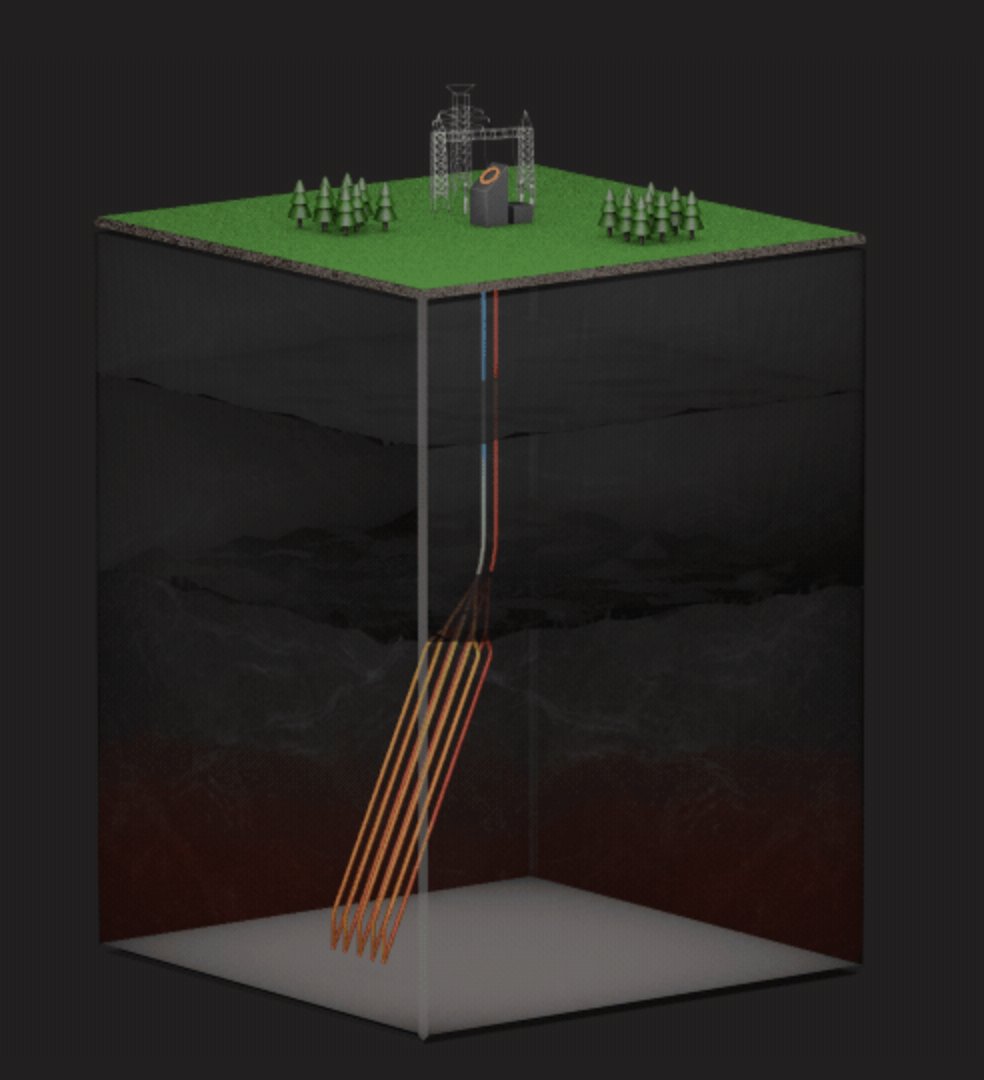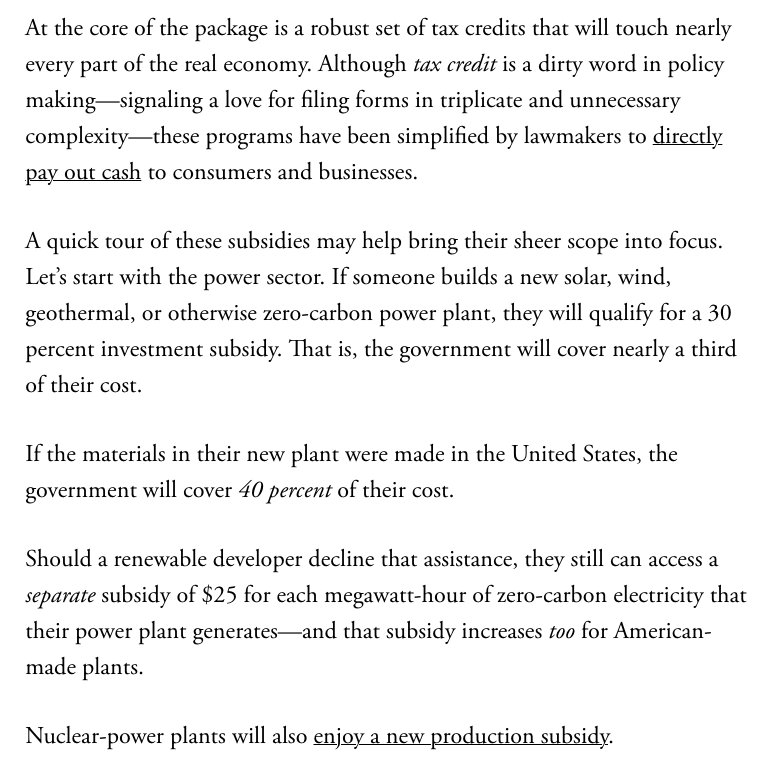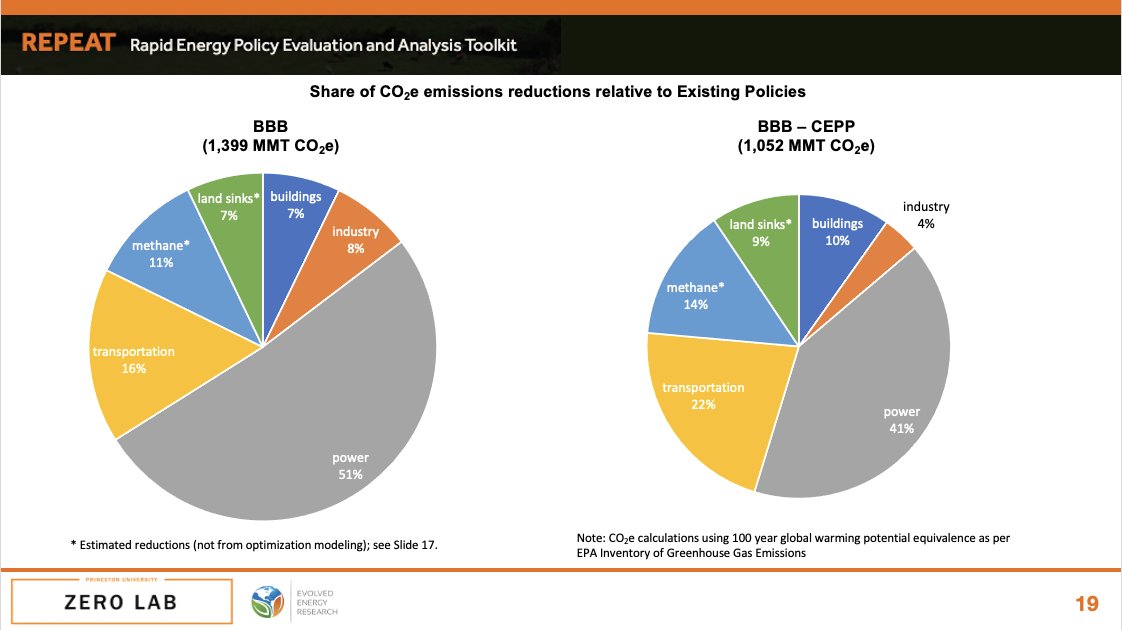
Can pending Congressional legislation deliver Biden's #ClimateAction goals as #COP26 nears? Will losing the CEPP be a fatal blow? How far on the path to net-zero can we get?
REPEAT Project from Princeton ZERO Lab & @evolved_energy out today has answers @ repeatproject.org
REPEAT Project from Princeton ZERO Lab & @evolved_energy out today has answers @ repeatproject.org

I am happy to announce launch of the REPEAT Project, a new initiative of my @Princeton ZERO Lab w/@ErinNMayfield @dartmouth & @evolved_energy, which provides regular, timely & independent environmental & economic evaluation of federal energy & climate policies as they’re proposed 

Today we launch our website at repeatproject.org & a preliminary report analyzing impacts of the House Build Back Better Act and the Senate Infrastructure Investment and Jobs Act. We also present Existing Policy (where we are now) + Net-Zero Benchmarks (where we want to go)
So what did we find?
We find that the House climate package is right on target for Biden's 2030 climate pledge, but any cuts to the package, including losing the CEPP, could leave the U.S. short of that goal. Key figures ⤵️


We find that the House climate package is right on target for Biden's 2030 climate pledge, but any cuts to the package, including losing the CEPP, could leave the U.S. short of that goal. Key figures ⤵️
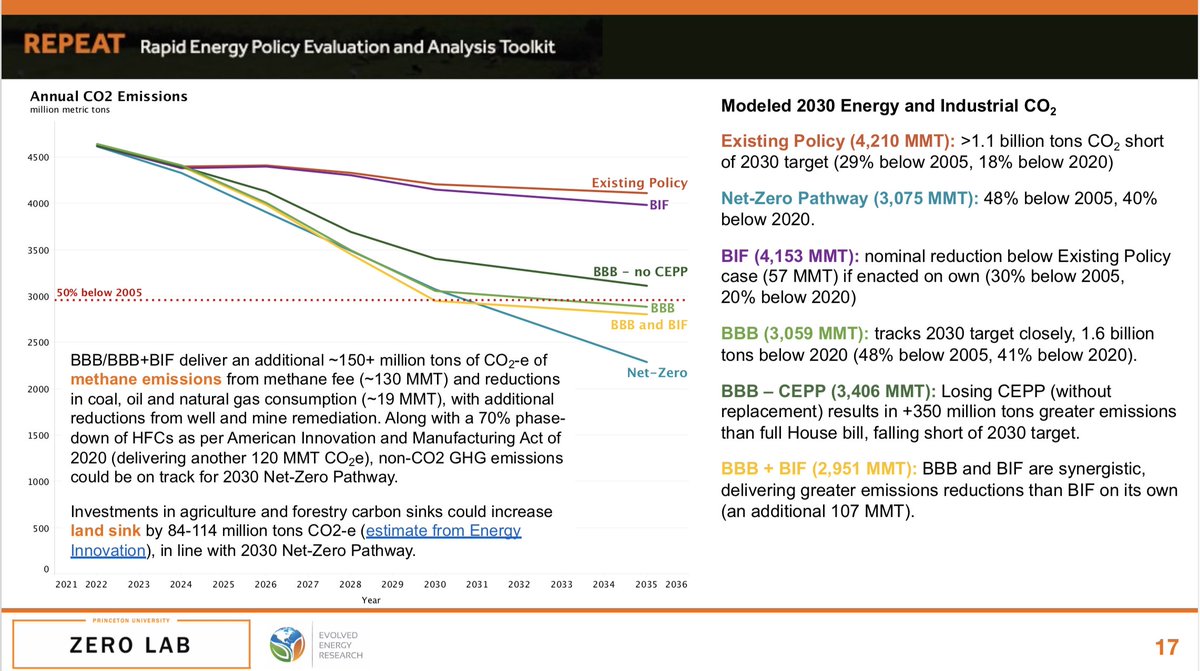
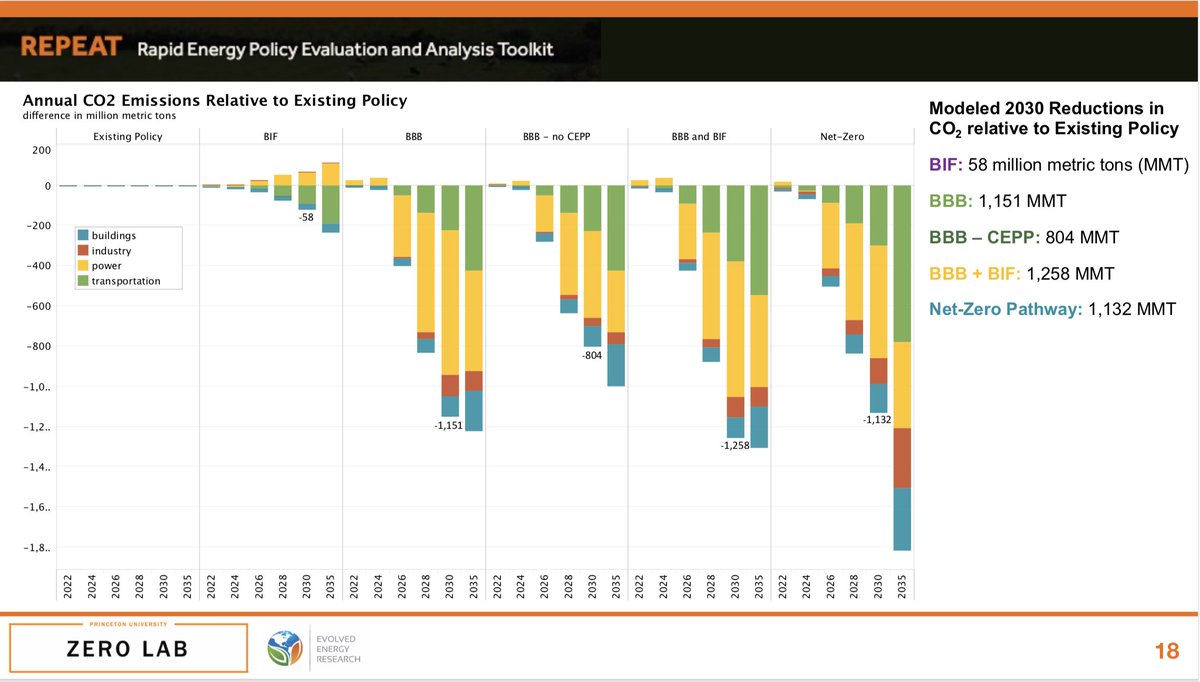

Still, while removing CEPP loses 1/4 of emissions cutsin full House Bill, we analyze 40 separate policies in the House package and another 13 in the Senate Infrastructure bill and find that passage w/o CEPP could still deliver >1 billion tons of emissions reductions. 

For a full look at the policies we considered and how we chose to model them (or not), see bit.ly/REPEAT-Policies and summary in images below. 



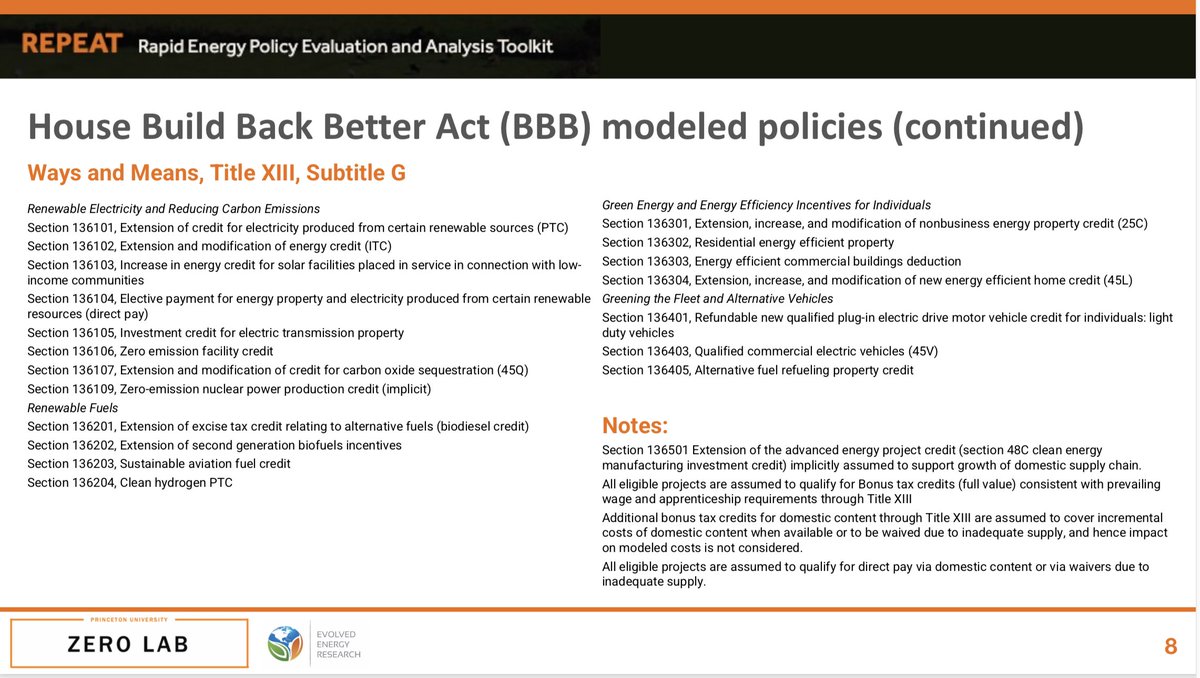

Quick acronym guide:
BBB = Build Back Better Act (HR 5376 congress.gov/bill/117th-con…)
BIF = Bipartisan Infrastructure Framework, aka Infrastructure Investment & Jobs Act (HR 3685 congress.gov/bill/117th-con…).
CEPP = Clean Electricity Performance Program, a key provision in BBB.
BBB = Build Back Better Act (HR 5376 congress.gov/bill/117th-con…)
BIF = Bipartisan Infrastructure Framework, aka Infrastructure Investment & Jobs Act (HR 3685 congress.gov/bill/117th-con…).
CEPP = Clean Electricity Performance Program, a key provision in BBB.
More key findings...
1. The House Build Back Better Act is well calibrated in size & scope to meet President Biden's 2030 climate pledge to reduce national GHG emissions 50-52% below 2005 levels. If enacted in full, it would cut US GHGs by 1.4 billion tons CO2-equivalent (CO2e).
1. The House Build Back Better Act is well calibrated in size & scope to meet President Biden's 2030 climate pledge to reduce national GHG emissions 50-52% below 2005 levels. If enacted in full, it would cut US GHGs by 1.4 billion tons CO2-equivalent (CO2e).
2. Passage of Senate bipartisan Infrastructure Bill on its own would barely impact US emissions. The policy contains important climate resilience, transmission, EV charger, & RD&D investments, but cuts CO2 emissions only 60 million tons this decade. Its not a big climate bill.
3. That said, the House Budget Bill and Senate Infrastructure Bill are synergistic. Passing both delivers an additional 107 million metric tons of emissions reductions, relative to passage of the House bill alone (~2x the impact of passing the Infrastructure Bill on its own).
4. Passage of #BuildBackBetter Act w/o the Clean Electricity Performance Program (CEPP) would leave the U.S. short of @POTUS's 2030 climate commitment by ~330 million metric tons (~5% of 2005 GHGs), necessitating further legislative or regulatory action to meet Biden's goals.
4b. Passing the House package without CEPP results in roughly 350 million metric tons of additional CO2 emissions vs. passing the full bill. Losing CEPP without any replacement constitutes ~25% of the total greenhouse gas emissions reductions delivered by the full House BBB Act
5. Even without CEPP or additional measures, the House bill would still reduce U.S. greenhouse gas emissions by more than 1 billion tons of CO2-equivalent, which I think would safely constitute the most impactful climate policy in U.S. history.
5b. The bill would lower total US GHG emissions by ~16% of 2005 levels. Emissions of CO2 would fall by >800 million tons vs. Existing Policies + an additional ~150 million tons CO2e of methane reductions + ~100 tons increase in land carbon sinks.
6. If Congress fails to pass ANY new legislation, Existing Policies would leave the U.S. >1.1 billion tons of CO2 short of the President's 2030 climate commitment (1.35 billion tons of CO2-equivalent GHGs). It is unlikely regulatory measures alone could close a billion ton gap.
The full report w/additional quantitative findings & graphics are available at repeatproject.org. This report contains macro-energy system modeling results including impact on carbon dioxide emissions, clean energy and electric vehicle deployment, fossil energy use + more.
Detailed ‘downscaled’ results, employment, air pollution & public health impacts + state-level data portal will be released week of Oct 25-29. The geospatially resolved framework (a refinement of the @Princeton Net-Zero America study) sets this work apart from others. Teaser ⤵️ 
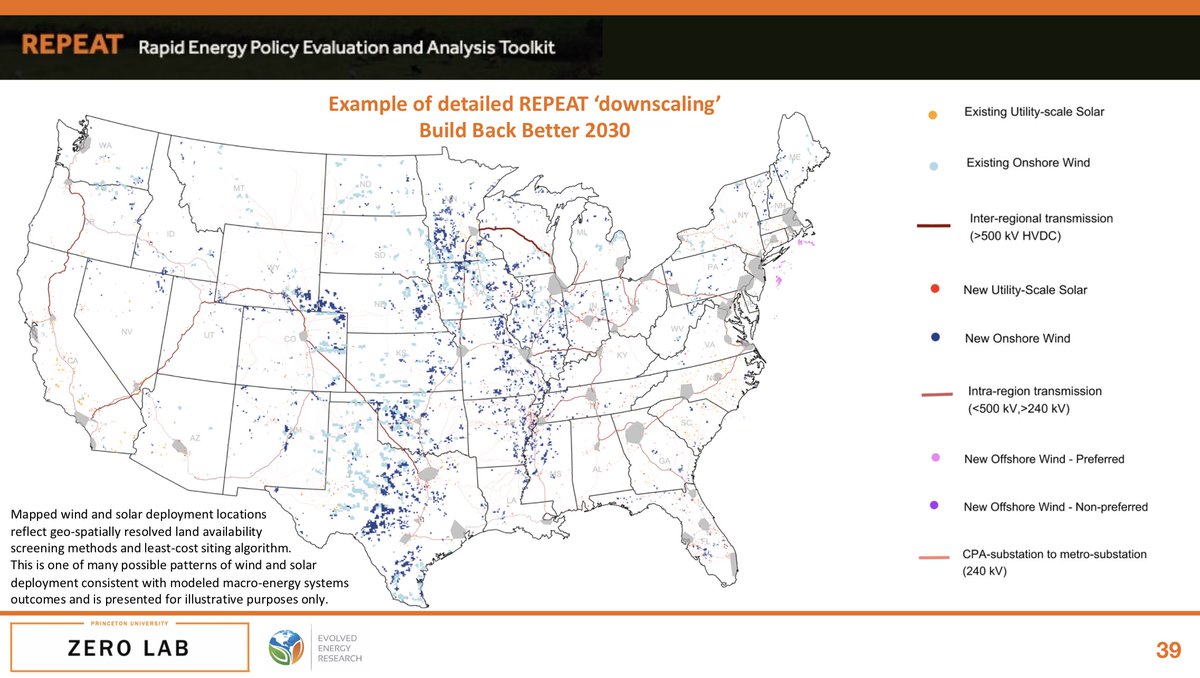
And the REPEAT Project will continually evaluate the evolving Congressional policy as it comes together/passes to see how far we are along the net-zero path. So STAY TUNED @ repeatproject.org!
My heartfelt thanks to the entire REPEAT team who has worked for months to get this incredible array of geospatially-resolved inputs, macro-energy systems models, and geospatial downscaling & impact models all working smoothly and quickly enough for timely policy analysis. 

That includes @ErinNMayfield (Co-PI), @evolved_energy's Ryan Jones & Jamil Farbes, Dr. @NehaSPatankar & DR. Qingyu Xu, @AnnaFJacobson @aneeshamanocha @ClaireWayner Riti Bhandakar & Cady Feng, @gschivley Emily Leslie, and Andrew Pascale. Y'all rock!!!
@threadreaderapp unroll please
• • •
Missing some Tweet in this thread? You can try to
force a refresh


